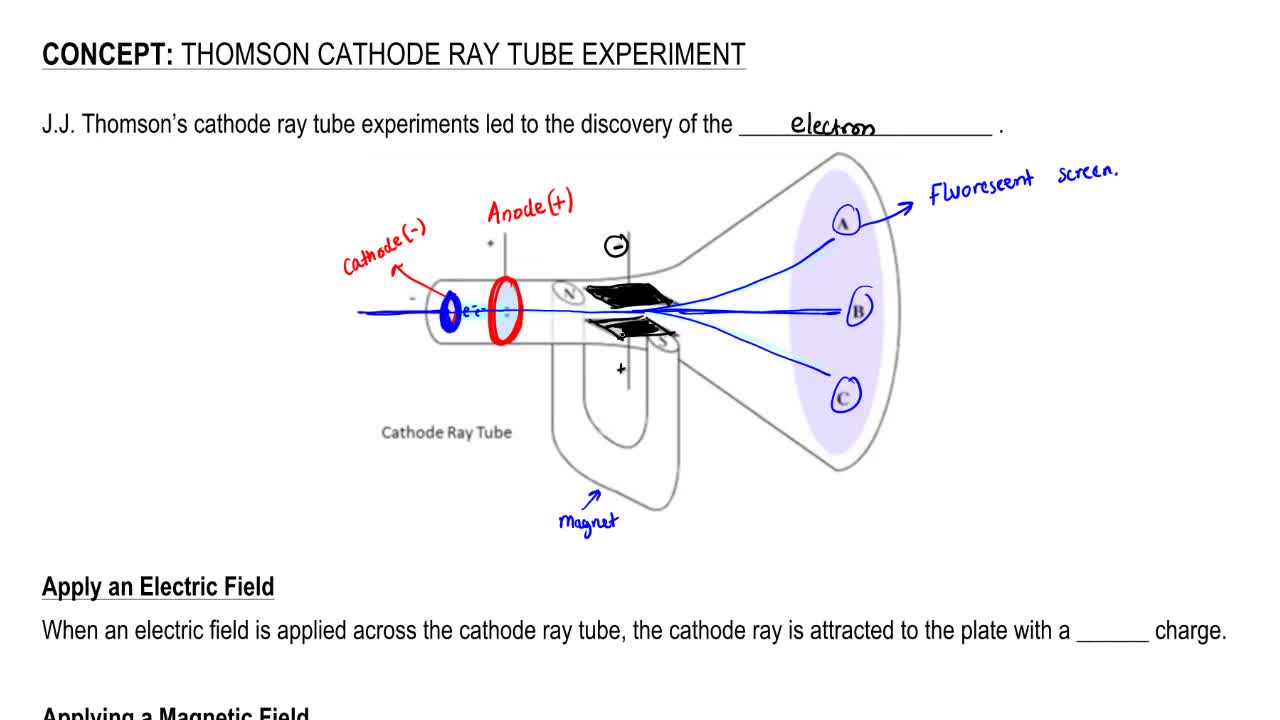
It is a tube equipped with cathode and anode, with a mask with a slit so as to produce a planar cathode ray beam, there is also a fluorescent screen so as to highlight in a visual manner the presence of the beam. The picture below illustrates the operation of a Crookes tube in a schematic way.įor experiments with cathode ray tube we used an educational model readily available on eBay. The term Crookes tube is also used for the first generation, cold cathode X-ray tubes, which evolved from the experimental Crookes tubes and were used until about 1920. Wilhelm Röntgen discovered X-rays using the Crookes tube in 1895. Crookes tubes are now used only for demonstrating cathode rays. Thomson’s 1897 identification of cathode rays as negatively charged particles, which were later named electrons. It was used by Crookes, Johann Hittorf, Julius Plücker, Eugen Goldstein, Heinrich Hertz, Philipp Lenard and others to discover the properties of cathode rays, culminating in J.J. When a high voltage is applied between the electrodes, cathode rays (electrons) are projected in straight lines from the cathode. The CRT was the main type of television screen until the liquid crystal display became popular in the early 2000s.A Crookes tube is an early experimental electrical discharge tube, with vacuum, invented by English physicist William Crookes and others around 1869-1875, in which cathode rays, streams of electrons, were discovered.ĭeveloped from the earlier Geissler tube, the Crookes tube consists of a partially evacuated glass bulb of various shapes, with two metal electrodes, the cathode and the anode, one at either end. Later, along with other inventions and improvements, it was used for the first modern electronic television by Philo T. The cathode ray tube was invented in 1897, and used as an oscilloscope (a machine to show waves).

For a large television, this vacuum tube can be quite heavy. Because there is a vacuum inside the tube (which has to be strong enough to hold out the air), and the tube must be glass for the phosphor to be visible, the tube must be made of thick glass. Changing this picture 30 times every second will make it look like the picture is moving. By carefully controlling which bits of phosphor light up, a bright picture can be made on the front of the vacuum tube. The electrons can be aimed by creating a magnetic field. The electrons make the phosphor light up. The electrons hit the front of the tube, where a phosphor screen is. To better control the direction of the ray, the air is taken out of the tube, making a vacuum. This is used to pull the electrons toward the front of the glass tube, so the electrons shoot out in one direction, making a cathode ray. Also inside the glass tube is an anode that attracts electrons. The cathode is an electrode (a metal that can send out electrons when heated). It was used in almost all computer monitors and televisions until LCD and plasma screens started being used.

It was the most common type of display for many years.

The cathode ray tube or CRT was invented by Karl Ferdinand Braun. Cathode ray tube using electromagnetic focus and deflection (parts shown are not to scale)


 0 kommentar(er)
0 kommentar(er)
